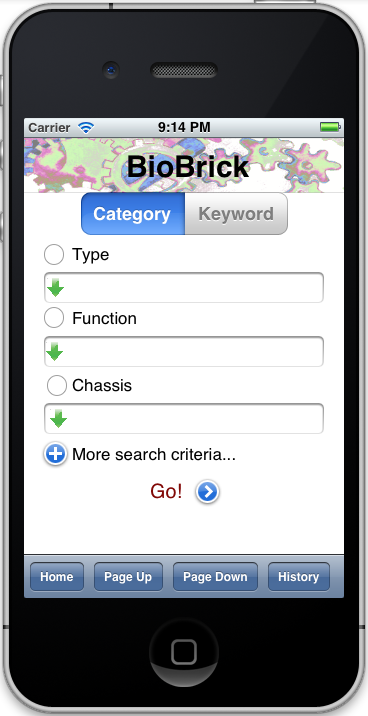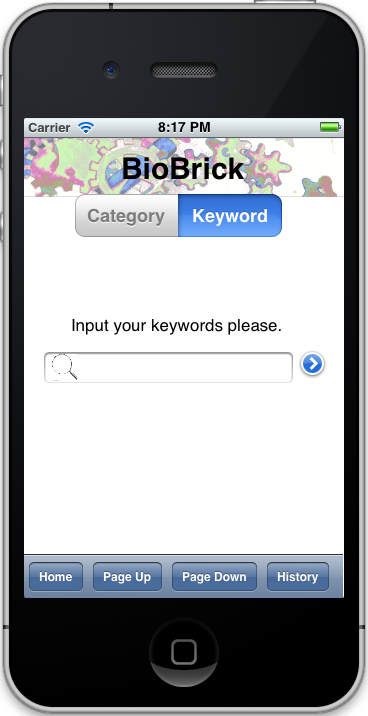Template:SUSTC-Shenzhen-A/Project
From 2012.igem.org
Contents |
Overall project
Abstract
The website "Registry of Standard Biological Parts" promotes the development of synthetic biology through providing genetic parts. To expand its influence in data exchange, we found it necessary to build an app client for it. In order to save time in searching BioBrick, simplify the process of selecting classifications, and facilitate changing selected category, we will be devoted to adjust database structure so that we can change the interface of BioBrick searching into spinner-formed .
Expected Results
As shown in the figures, two ways will be provided to search BioBricks . The first method is a kind of web-of-knowledge-way searching technique which resembles the website www.webofknowledge.com. A common vocabulary for varied search terms related to BioBricks will be provided.Such terms are browse by functions, browse by types, etc. And users can choose the terms they need on their own. This will provide a powerful search function. The second way is a keyword-way search technique. This kind search is simple yet quick. A keyword is input and a set of BioBricks with this key word is returned. We believe that users can find their target BioBricks quickly with the aid of these two search techniques.
brief process
- 7.9~7.16
All of our teammates enjoyed learning object c and using Xcode to program some necessary parts of our user interface(e.g. combo box).
- 7.17
In the first meeting, our group divided into two parts:UI & data. The main structure and initial division of work had been confirmed.
- 7.18(it's a current text)
In this day we determined three parts of our work: categories, search list, and search results. We also disgusted the search methods. From now, all the members started our group-work with clear aims.
- 7.21
Members of data group in search results broke through the main problem of data base. By loading data directly from xml file which provided by partsregistry.org (It couldn't be loaded only if it was changed some parts of the form) and send into mysql, we could easily get partname-based-data from our database. With this optimized new database, UI group could test their work with high efficiency.
- 7.23
Discussing with Shenzhen Team, we were given a lot of advice of search methods and user interface. Knowing what users really needed, we got the ability to optimize the completed parts and improve the design of parts which would be added.
- 7.25
The work of searching part (list and result) had been done!
- 7.27
All parts of our project had been combined and tested. Now we're trying to optimize the user interface with unified style.
 "
"















